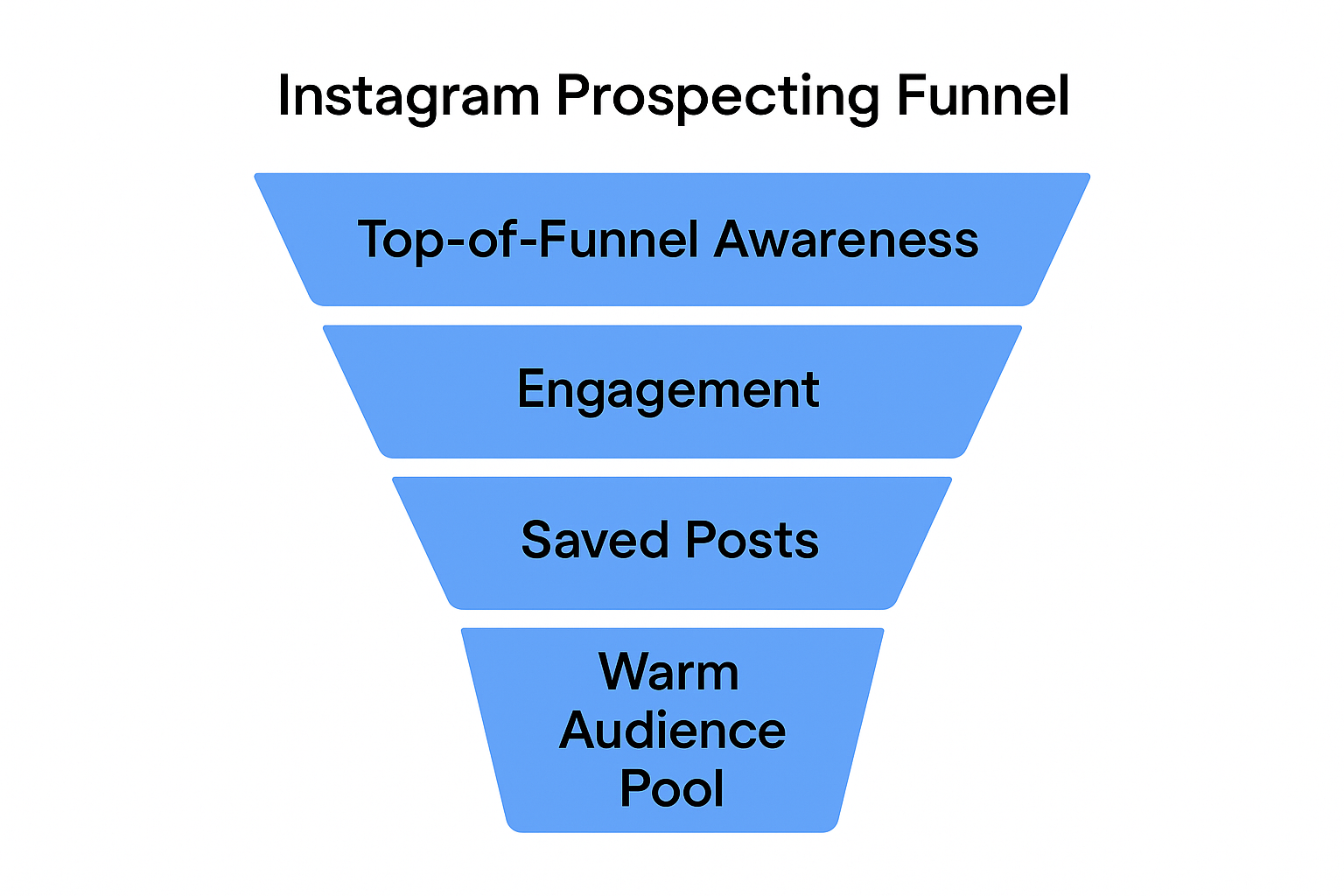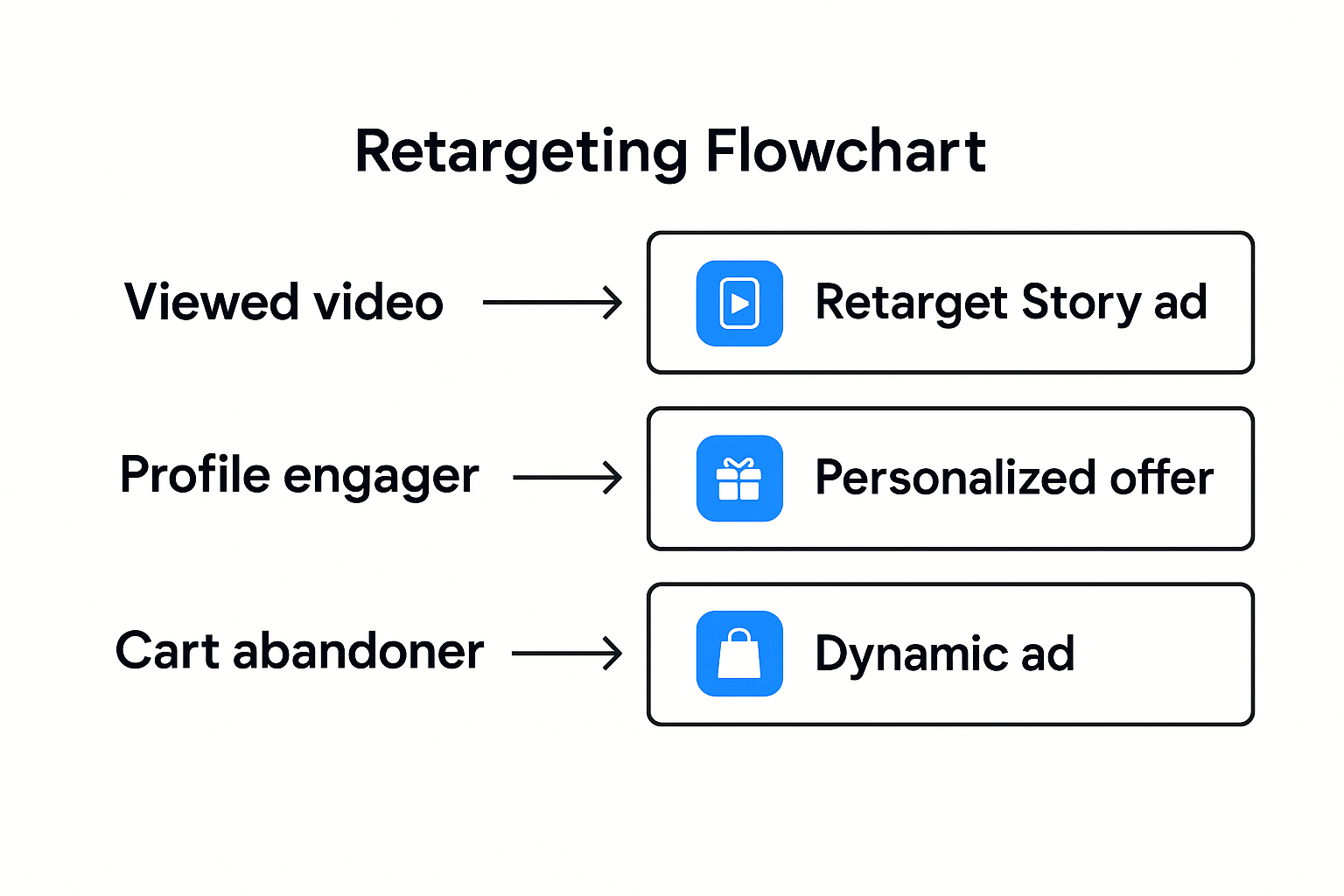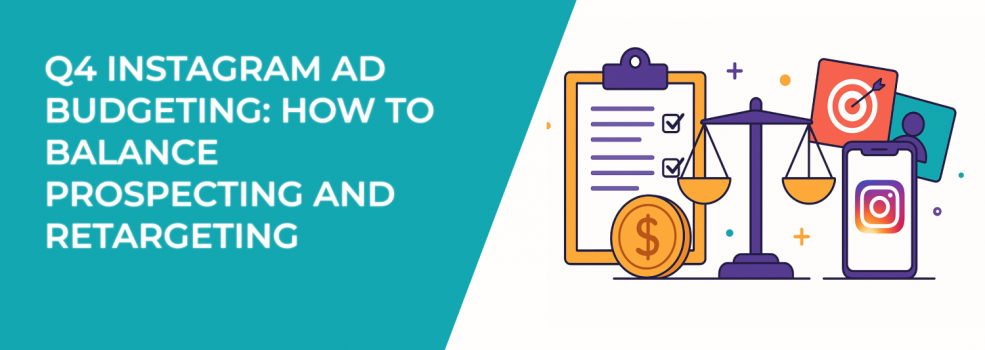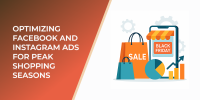As Q4 ramps up, ad costs rise, competition intensifies, and user behavior shifts across platforms. Instagram — especially for U.S.-based e-commerce and DTC brands — becomes a discovery engine and a high-intent shopping hub rolled into one.
But here’s the challenge: how do you budget for both new customer acquisition and converting warm leads without wasting spend?
Let’s talk about how to balance prospecting and retargeting on Instagram, based on what actually works in Q4.
Know What Changes in Q4 on Instagram
Holiday season behavior isn’t subtle. Users start browsing gift ideas in October, ramp up engagement in November, and race to check out in early December.
Here’s what typically happens:
-
CPMs rise fast — by up to 40% between October and Cyber Monday.
-
Engagement spikes — especially on Instagram Stories and Reels.
-
Purchase intent increases — but so does ad fatigue.
As noted in 2025 Instagram Ad Strategy: What Separates Good from Great, the key to thriving in Q4 isn’t just being seen — it’s being remembered and chosen. Your ad budget must reflect that urgency.
Phase 1: Start With Prospecting (But Cap It Early)
Prospecting is essential in Q4, but if you spend too much on cold audiences too late in the season, you'll miss conversions when they count most.

Here’s how to approach October:
-
Allocate 60–70% of your budget to prospecting before October 20. This allows your brand to get in front of users early in their shopping journey.
-
Focus on Top-of-Funnel Reels, Stories, and Feed ads, especially vertical video formats that grab attention and encourage engagement.
-
Use engagement-based lookalike audiences built from high-quality sources, such as LeadEnforce-extracted followers or active Instagram engagers.
If you haven’t yet explored how Reels can drive traffic and build warm audiences fast, read How to Use Instagram Reels in Your Marketing Strategy to level up your creative approach.
Tip: Include soft CTAs early in the season — "Save this," "Browse now," or "Follow for deals" — instead of pushing direct sales too soon.
Phase 2: Retarget Like a Pro by Mid-November
Once your funnel is full, it’s time to focus on what actually converts: retargeting.

By mid-November (especially heading into Black Friday), shift your budget to 70–90% retargeting. Here’s what to include:
-
Instagram video viewers — especially those who watched 50% or more of your video content.
-
Profile engagers — people who liked, commented, shared, or saved your Instagram posts or Stories.
-
Website traffic and abandoned carts — target visitors who viewed products or added to cart but didn’t check out.
-
LeadEnforce custom audiences — retarget followers of niche Instagram accounts or Facebook groups for higher relevance.
Learn how to structure Instagram retargeting campaigns with urgency, frequency control, and segmentation in The Secret to Retargeting Success on Instagram.
Important: Don’t hammer the same creative 10 times. Rotate assets, update copy, and test ad formats weekly.
Timing Breakdown: How to Structure Your Instagram Budget
Your Instagram ad budget shouldn’t be static throughout Q4. Instead, adjust your spend based on shopping behavior, platform costs, and campaign performance. Here’s a detailed breakdown of how you can structure your budget across key Q4 milestones:
-
October 1–15: Spend 60% of your budget on prospecting and 40% on retargeting. This is when new customers are actively exploring options. Focus on building awareness with Reels and Stories, and start forming warm audiences from your top performers.
-
October 16–31: Shift to a more balanced mix: 50% prospecting and 50% retargeting. At this stage, you should begin layering in reminders for early-bird offers or pre-sale announcements, while still bringing in new leads.
-
November 1–20: Reduce prospecting to 30% and focus 70% of your budget on retargeting. Target people who showed interest in October, and test discount messaging or product-focused ads that tie into upcoming sales.
-
November 21–30 (Cyber Week): Move 90% of your budget to retargeting. This is your peak conversion window. Focus on dynamic product ads, abandoned cart flows, and urgent CTAs like "Offer ends soon" or "Only 24 hours left."
-
December 1–15: Return to a 40% prospecting and 60% retargeting split. You can target last-minute shoppers and new gift buyers who may have missed your November promotions.
-
December 16–24: Shift back to 90% retargeting. Target warm leads with digital gift ideas, fast shipping messages, or gift card promotions that cater to urgent buyers.
This pacing gives you the flexibility to build audiences early and convert them at the moments that matter most.
Geo Tip: Adjust for Regional Shopping Behavior
If you're advertising in the U.S., your targeting strategy should reflect how different regions shop:
-
West Coast buyers tend to shop later in the season, often between December 15 and 24.
-
Southern U.S. audiences engage more with Reels and short-form video than with traditional feed ads.
-
Northeastern states usually see higher mobile CPMs, but also better conversion rates for premium products.
Geo-targeting can help you tailor your creative and timing by state or zip code. Tools like LeadEnforce allow you to refine these audiences beyond what Meta offers natively.
Optimize Your Campaigns with the Right Metrics
Don’t let flashy numbers like CTR or reach distract you. In Q4, the most useful metrics for Instagram ad campaigns are:
-
Cost per conversion — the gold standard for holiday profitability.
-
Frequency — try to stay under 3 for cold audiences, and under 5 for warm ones.
-
Add-to-cart rate — especially for product-focused ads.
-
Thumb-stop rate — for Reels and Stories, this shows if people are actually watching.
To learn more about performance analysis, read How to Analyze Instagram Ads Performance and Turn Insights into Action.
Avoid the "Zero Delivery" Trap
If you're running high-budget Instagram campaigns in Q4 and suddenly notice an ad set isn’t delivering, don’t panic. You might be hitting a volume or overlap issue. Read Why You See 'Ad Set May Get Zero' on Facebook and How to Fix It to troubleshoot before you lose momentum.
Wrap-Up: Budget With Intent, Adapt With Data
Q4 Instagram advertising is not just about scaling spend — it’s about spending smarter.
From audience-building in October to retargeting conversions during Cyber Week and catering to last-minute buyers in December, your ad budget should evolve week by week.
By combining smart timing, warm audience segmentation, and creative variety, your Q4 Instagram strategy can drive serious ROI even in a crowded market.

